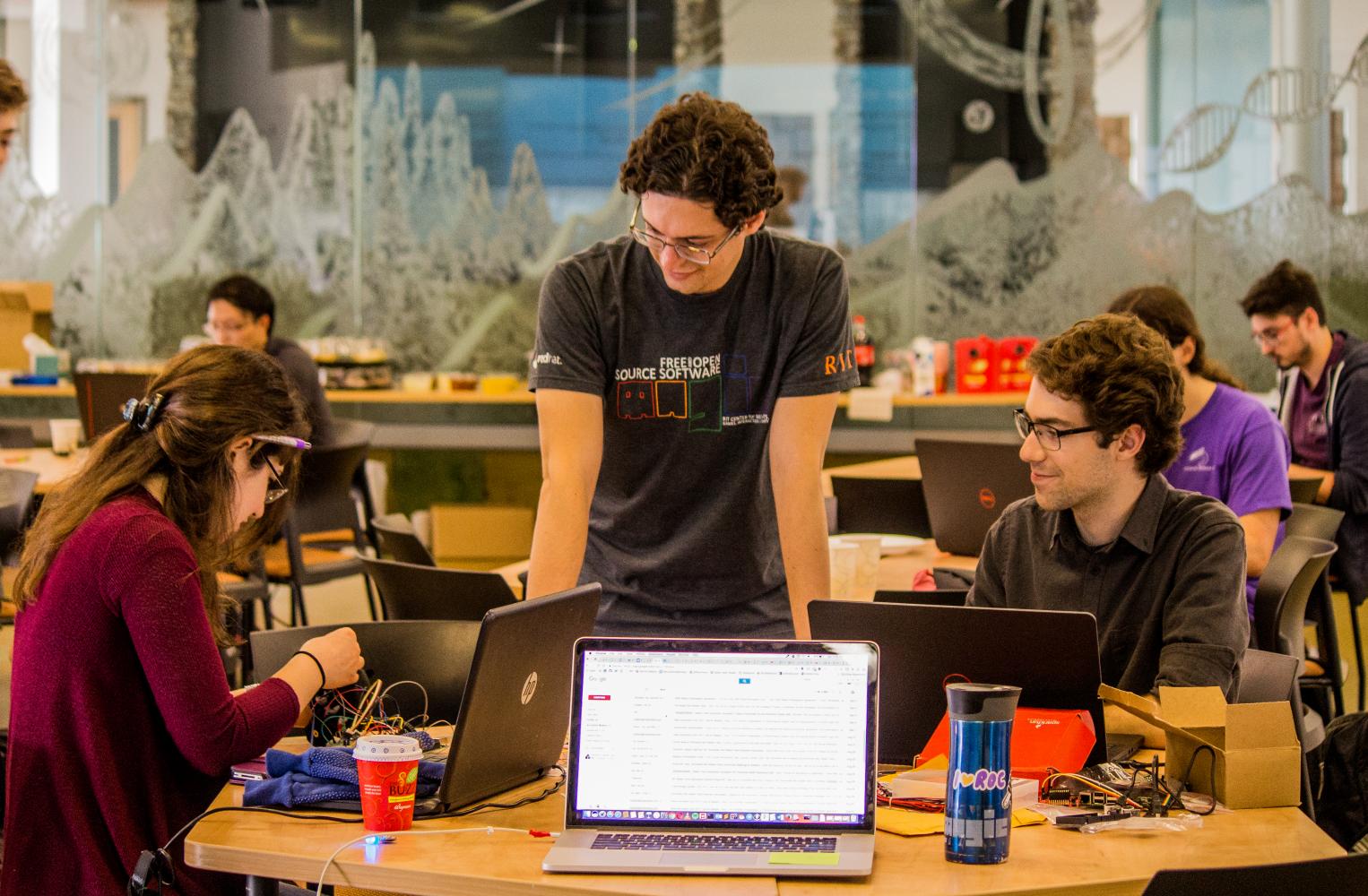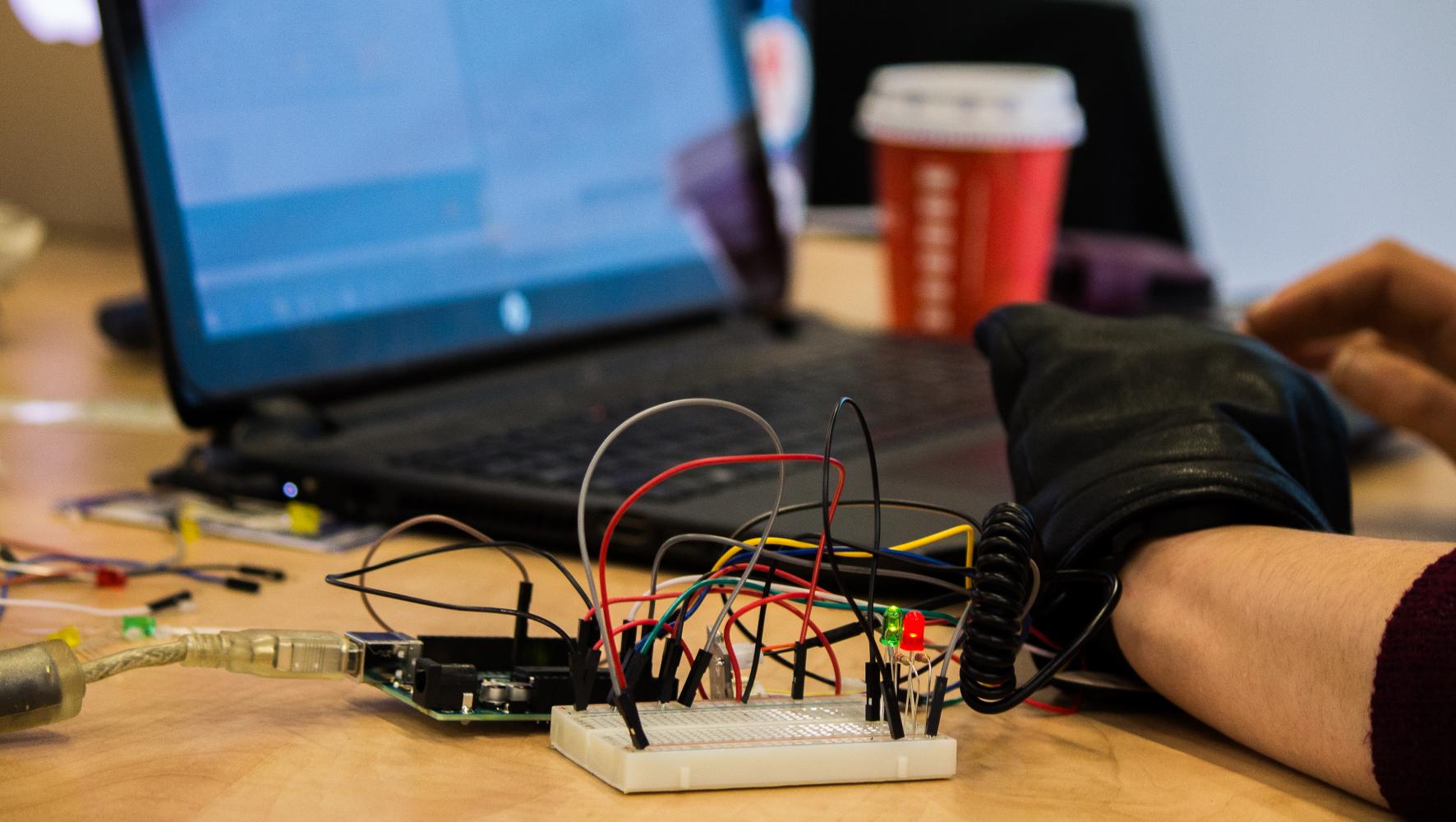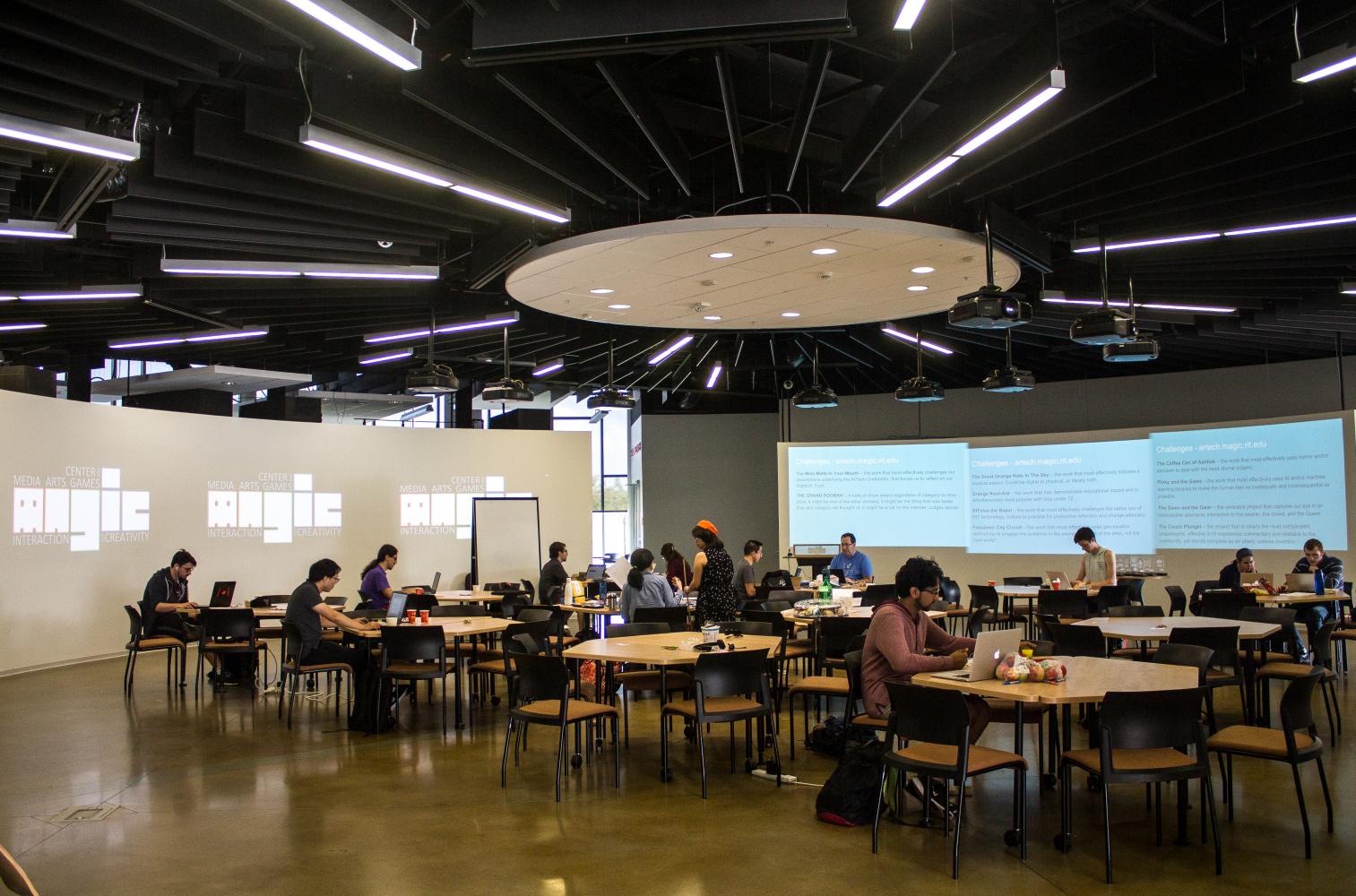RIT's MAGIC Center held their first annual "ArTech Cre8-a-th0n" Sept. 16 and 17, putting the
This hackathon brought students from all the aforementioned backgrounds together. The groups they formed imagined and created an extensive variety of projects. Held in the Student Innovation Hall of the Center for Student Innovation (CSI), 14 teams sought to show what is possible when technology is cleverly combined with both art and design.
The Story and Culture Behind ArTech
The goal of ArTech was for these students to create projects which were comedic (just see the names of the awards below), yet purposeful in just two days. This event had been in the works for quite some time, according to the MAGIC Center staff.
“Knowing RIT’s background of art and tech — and having a strong background in both — I have always wanted to see the two combined.”
“Knowing RIT’s background of art and tech — and having a strong background in both — I have always wanted to see the two combined,” said Dan Schneiderman, the director of the event and
Schneiderman is a strong believer in the maker movement, a push to bring tech enthusiasts together on do-it-yourself (DIY) projects. Aside from special events like ArTech, RIT is committed to the idea of providing space for aspiring makers. His work, for instance, often brings him up to the Construct: RIT’s all-access maker space in Institute Hall.
Projects on Display
The range of creativity on display during ArTech was quite noticeable.
The best overall creation went to the team "Spotiparty": an intelligent, democratic party playlist generation application, winning best in show.
Spotiparty was a web application solely created by Elliot Miller. His goal was to allow anyone at a party to share their music library and see what kind of tunes most people would like to hear. Spotiparty allowed for tempo and volume selection to keep the party going at whatever rate listeners wanted. Miller expressed his hope to get more music services of this ilk working soon.
Aside from devices and applications, games were on display at ArTech too. One game, for instance, was "The Valley" — a comedic text adventure focusing on life after graduating and moving to Silicon Valley. The team behind the game were recognized on account of their utilization of machine learning, as well as use of humor.
By far, the most common sort of project developed at ArTech were those involving wearable and augmented reality technology. Six out of the 14 teams competed in these categories. One notable augmented/virtual reality project was a "bullet hell" game, "Magic Beats." In it the player swings swords at incoming blocks to create a range of musical tones. This Tron-inspired game was demoed on the Oculus Rift in MAGIC’s VR lounge.
Another bullet hell game in the same vein was “Fidget Spinner Apocalypse.” Much like the name would suggest, this game tasked players with destroying an incoming plague of Fidget Spinners.
At the close of the weekend, prominent members of the local creative community came to see the projects demonstrated. The judges included the director of the Rochester Hackerspace, director of the RIT Makerspace, dean of CIAS and many RIT professors. The K-12 education category was even judged by an 11-year-old.
Looking Forward
“We’re looking at doing this again,” commented Schneiderman. “We were excited to see people playing with so much hardware and a lot of people playing around, trying new things, mixing majors.”
The MAGIC Center hopes to make this a recurring event in the future and bring in even more members of the community. Providing students with a wide range of resources (and food) to encourage uninterrupted creativity over the weekend yielded more than satisfactory results for the first "ArTech Cre8-a-th0n" according to Schneiderman.
“So we're really happy that everyone can come together and just create.”
“We had multiple [RIT Colleges] present to over half a dozen partners from around the campus,” he said. “So we're really happy that everyone can come together and just create.”
Award Winners
- The Great Orange Note In The Sky: Most effective use of music.
- Winner: "Spotiparty" by Elliot Miller
- Orange Kool-Aid: Most educational and impactful for kids under 12.
- Winner: "Jam Dough" by Kunal Marwaha, Frank Hrach, Rynne French, Ethan House, Ryan Buzzell and Clark Hochgraf
- RITchie the Rebel: Project which best challenged a status quo here at RIT.
- Winner: "TigAR Hat" by Ariel Viggiano, Dymen Barkins, Carmen Chiu, Rebecca Medina and Todd Bernhard
- Flo(u|we)r City Circuit: Best use of geo-location technology to engage an audience outside of the "real world."
- Winner: "Twitter Receipts" by Kennedy Kong
- The Coffee Can of Ashtiok: Most successful at using humor to address a dreary topic.
- Winner: "The Valley" by Holly Hastings and Connor Seiden
- Pinky and the Game: Best at utilizing AI and/or machine learning.
- Winner: "The Valley" by Holly Hastings and Connor Seiden
- The Gwen and the Gwar: Most eye-catching wearable project
- Winner: "The Love Glove" by Mark Brown and Katherine Gascon
- The Couch Plunger: Most complex, yet relatable to the community, while also “useless” invention.
- Winner: "The Love Glove" by Mark Brown and Katherine Gascon
- The Meta Melts In Your Mouth: Best at challenging the underlying beliefs ArTech was built on.
- Winner: "Jam Dough" by Kunal Marwaha, Frank Hrach, Rynne French, Ethan House, Ryan Buzzell and Clark Hochgraf
- THE GRAND POOBAH: Best-of-show award.
- Winner: "Spotiparty" by Elliot Miller
Disclaimer: The author of this article was a winner in the event.










